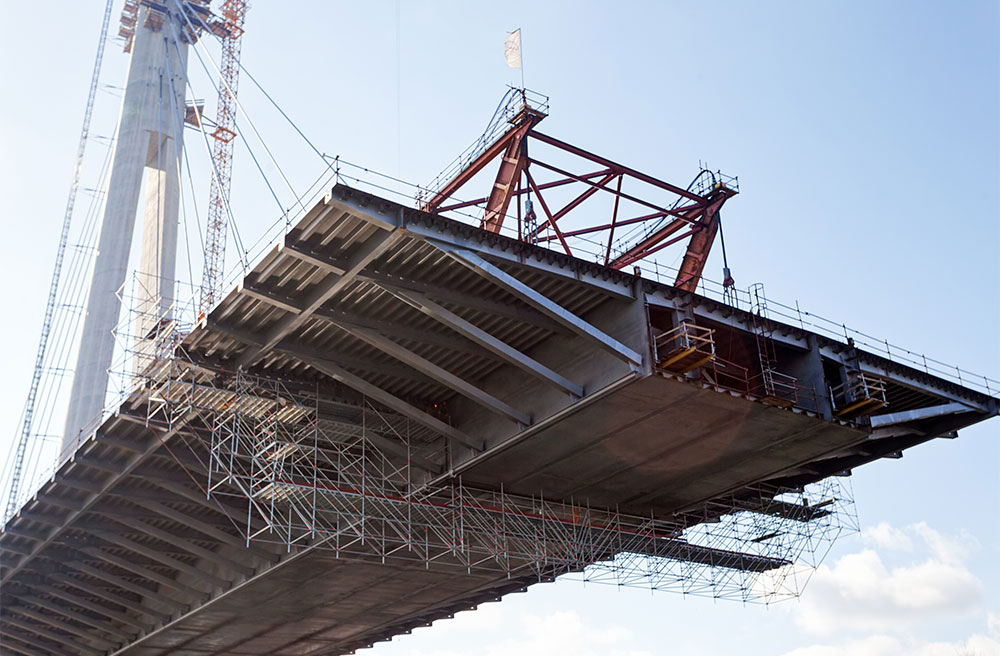Having awakened on the morning of March 26 to the devastating news of the collapse of Baltimore’s Francis Scott Key Bridge after being struck by the Dali container ship, I thought of the many times I crossed the bridge as a child growing up in Washington, D.C. I also recalled Montgomery Schyler’s comments on the opening of the Brooklyn Bridge, when he stated that “the work which is likely to be our most durable monument, and to convey some knowledge of us to the most remote posterity, is a work of bare utility; not a shrine, not a fortress, not a palace, but a bridge.”
The Francis Scott Key Bridge Reconstruction
Opened in March 1977, the Francis Scott Key Bridge, a 1.6-mile steel-arched continuous-truss bridge, was the final link of the Baltimore Beltway/Interstate 695, crossing over the Patapsco River and connecting Sparrows Point to the southernmost tip of Baltimore. It was a four-lane bridge with a vertical clearance of 185 feet. The downed bridge blocks access to the Port of Baltimore, one of the busiest American ports, handling 52 million tons of cargo that contributes to $80 billion in U.S. trade. It is the busiest port in the country for cars and light trucks.[1] In addition, the 47-year-old Key Bridge carried more than 12.4 million commercial and passenger vehicles in 2023[2] and made up approximately 8% of the toll revenue of the Maryland Transportation Authority (MDTA) in 2023, or approximately $57 million.[3]
Promptly after the bridge’s collapse, the Federal Highway Administration announced the availability of $60 million in “quick release” emergency relief funds for debris removal, demolition, detours, emergency repairs and design work. The funds will also serve as a down payment toward initial bridge reconstruction costs.[4]

Progressive Design-Build Delivery Method
On April 25, only 30 days after the bridge’s collapse, MDTA announced that it will reconstruct the Key Bridge utilizing the progressive design-build delivery (PDB) method.[5] The PDB method is an innovative alternative project delivery method that offers advantages of schedule compression and cost containment.[6]
On May 7, the MDTA held a virtual industry forum to discuss its plans to rebuild the Key Bridge. It indicated that it envisioned a cable-stayed replacement bridge but it would consider other options and that the alignment of the new bridge would be along the existing center line to minimize environmental impacts and qualify for a categorical exclusion. The MDTA estimates that the replacement bridge will cost between $1.7 billion and $1.9 billion, and funds will be derived from insurance proceeds, cash on hand, bond financing and federal funds.
The PDB approach will involve a two-phase contract, with a single-step RFP procurement to be awarded in July 2024 to the selected PDB team based largely upon qualifications and experience. Phase 1 of the PDB will consist of preliminary design and professional services retained through a cost-plus-fee contract, with a stipulated not-to-exceed amount (NTE). Phase 2, effected by an amendment to the Phase 1 contract, will consist of final design and construction contracted at a guaranteed maximum price, with the new bridge expected to be completed by the fall of 2028. RFPs will also be issued for a single-selection general engineering consultant (GEC), with an estimated NTE of $75 million, and the selection of three construction management and inspection contractors, with an estimated aggregate NTE of $60 million.
Dispute Resolution Mechanisms, Including DRBs, in the PDB Delivery Method
Given the complexity of the Key Bridge’s reconstruction and the ambitious goals for completion, resolving disputes efficiently is crucial to maintaining project momentum and avoiding costly delays. The collaborative nature of a dispute resolution board (DRB) is a perfect complement to the PDB delivery method. Adopting effective dispute resolution mechanisms will be essential to mitigate risks and foster the collaboration essential to the PDB delivery method for the reconstruction of the Key Bridge.
Through the use of the PDB delivery method and embracing early dispute resolution practices, it is hoped that utility and design will intersect to create a durable, beautiful, aesthetically pleasing replacement Key Bridge.
[1] Lea Skene, "Governor: Salvors making progress in removing Key Bridge wreckage, vows to rebuild," WBAL-TV News, April 19, 2024, https://www.wbaltv.com/article/key-bridge-collapse-salvage-governors-update-april-19-2024/60547125.
[2] Id.
[3] "FY 2024 Traffic and Revenue Forecast Update Report," Maryland Transportation Authority, Nov. 3, 2023,https://mdta.maryland.gov/sites/default/files/Final%20MDTA%20FY%202024%20Traffic%20and%20Revenue%20Forecast%20Update%20Report.pdf.
[4] "Biden-Harris Administration Announces $60 Million in Emergency Work in Wake of Collapse of Francis Scott Key Bridge in Baltimore," U.S. Department of Transportation Federal Highway Administration, March 28, 2024, https://highways.dot.gov/newsroom/biden-harris-administration-announces-60-million-emergency-work-wake-collapse-francis.
[5] "MDTA Announces Virtual Industry Forum on May 7 for Rebuilding Key Bridge," MDTA, 2024, https://mdta.maryland.gov/index.php/blog-category/mdta-news-releases/mdta-announces-virtual-industry-forum-may-7-rebuilding-key-bridge.
[6] “Progressive Design-Build,” American Council of Engineering Companies of New York, https://acecny.org/page/progressive-design-build.